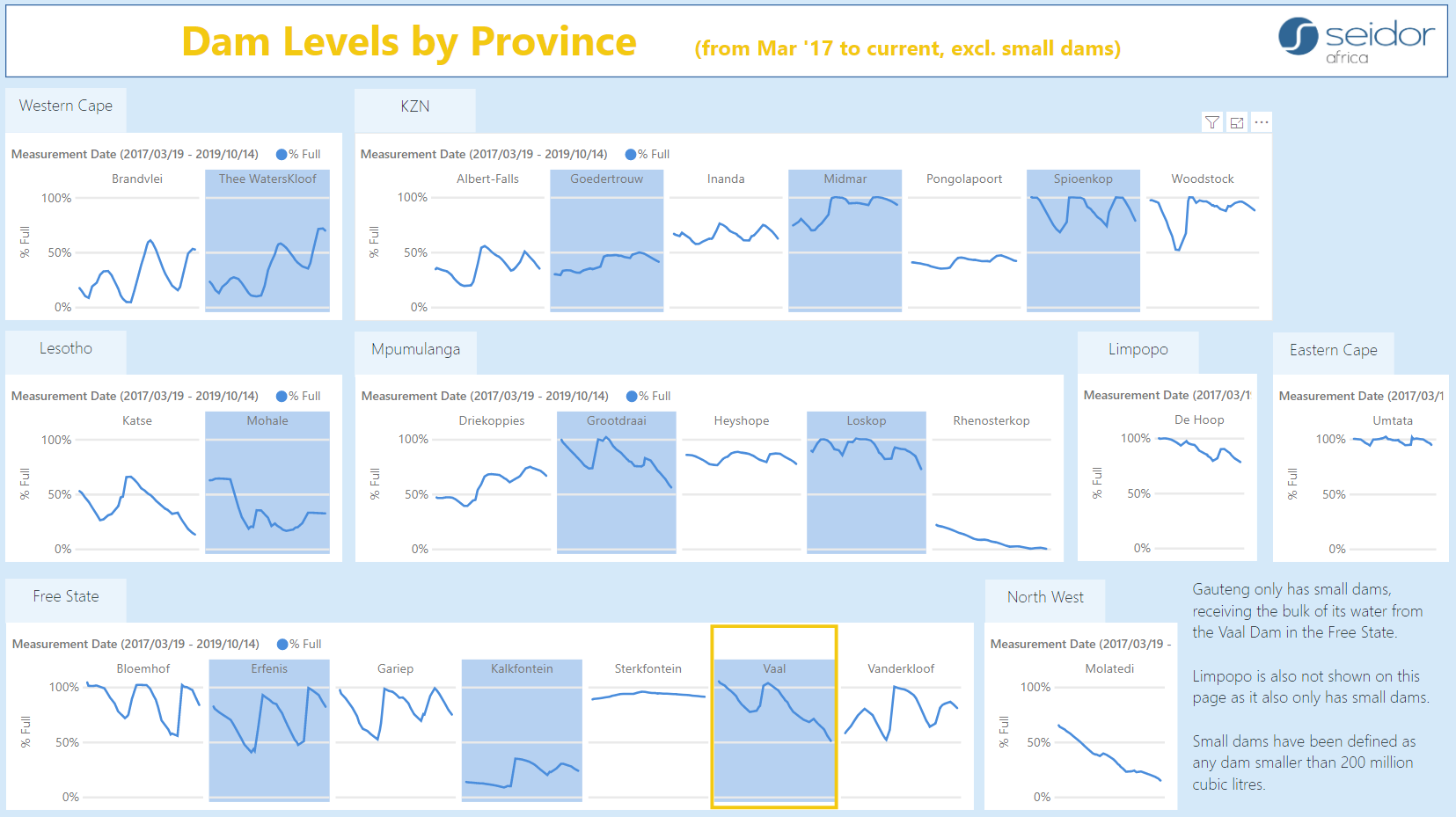Gauteng Spring Rainfall
When do the spring rains start in Gauteng?
We’re in the second half of October, and everyone in Gauteng is feeling the discomfort of the prolonged absence of rain. Rain to clean away the dust and pollution in the air; to turn the veld from brown or black to green, and to make us feel refreshed as we usually experience summer temperatures from August onward.
So, when do we typically start to get decent rain in Gauteng? The gutfeel answer from most people is “early in September as we should start getting rain in spring”. But this hardly ever happens (more on this below).
Others say that we should typically get our first decent rains from Paul Kruger’s birthday, the 10th of October, onward. This year, we had an incredibly good chance for rain that day but everyone I spoke to experienced dark clouds and strong winds but, unfortunately, no rain.
A clear pattern exists
Having analysed my 12 years of rain stats carefully, I’ve observed a clear pattern. Yes, there are some outlying stats where we had heavy rains early in September (like in 2012 when we received 15% of our annual rainfall in a single month), but usually, my observation is that we only get decent rains from the third week of October.
Please note that I’m not a meteorologist, and I’m using rainfall stats measured at my house over the past 12 years (I live in Parkmore, Sandton). Also, I have noted that the rainfall 1km up the road is often significantly different than at my address.
During the period between 2008 and 2018, I observed the following:
- By the end of September:
only two out of the ten years had more than 15mm of cumulative rain (starting from the 1st of September, i.e. the “start” of spring).
- By mid October:
half of the years had received 15mm or more cumulative rainfall (from the 1st of September); - By the end of the third week of October:
only two out of the ten years had not received more than 15mm of cumulative rainfall.
Sadly, 2019 is one of those years. So far this year we had 3mm of rain on the 6th of September, and 2mm of rain on the 13th of October.
Missing winter rainfall
We all know that Gauteng typically does not get winter rainfall; however, you might be interested to learn that, on average, we have one or two rainy days every winter (June, July and August), and we get on average 16mm of rain during this time. The 2019 winter, however, did not produce a single drop of rain from the end of April until the 6th of September.
Not only did we “miss out” on 16mm of rain in June, July and August, but we also missed out on an average of 29mm in May.
What worries me is that between 2008 and 2019 we’ve had three years without any rain in winter and those years have all occurred recently; 2016, 2018, 2019.
Water-restrictions until we’re in the clear
Seidor Africa has also done some analysis on all the dams in South Africa using data from early 2017 to current (here’s the link to the Dam Levels article).
From the extract below, you can see that the Vaal Dam is on a steep downward trend. The date range for the graphs below is March 2017 (just after Tropical Storm Dineo) to October 2019. The Vaal has its usual summer peaks and winter troughs, but the 2019 trough is far lower than the last few years. Unfortunately, we do not have stats for the period prior to March of 2017.
The Vaal Dam is currently at 52% (as of mid-October 2019) vs 84% at the same time last year. There are multiple reasons for this, including:
(a) the previous year still benefitted from the “left-overs” of Tropical Storm Dineo in 2017, which allowed us to enter the winter season with the Vaal Dam almost at capacity;
(b) we had considerably lower rainfall during the previous summer (Oct ’18 to Mar ’19); and
(c) because we have had a particularly dry winter this year, as mentioned above.
In addition, we will not be able to benefit from the ingenious Lesotho Highlands Water Project which sends water to the Vaal Dam via multiple long-distance tunnels and pipes. This is partly due to maintenance currently being done on the pipes at Katse Dam (during October and November 2019), and also because Lesotho is currently in the grips of a terrible drought.
Based on the above, I urge all Gauteng residents to use water sparingly and to take the current water-restrictions seriously. Even if we start receiving our summer thunderstorms soon, as historical trends indicate, we have a lot of capacity to build up before we are in the clear.
Seidor Africa specialises in data and analytical solutions.
We’ll provide you with interactive visualisations which will enable you to make sense of what drives your business.
Should you have any queries or comments, or should you wish to share your rainfall stats, please contact us at analytics@seidorafrica.com
